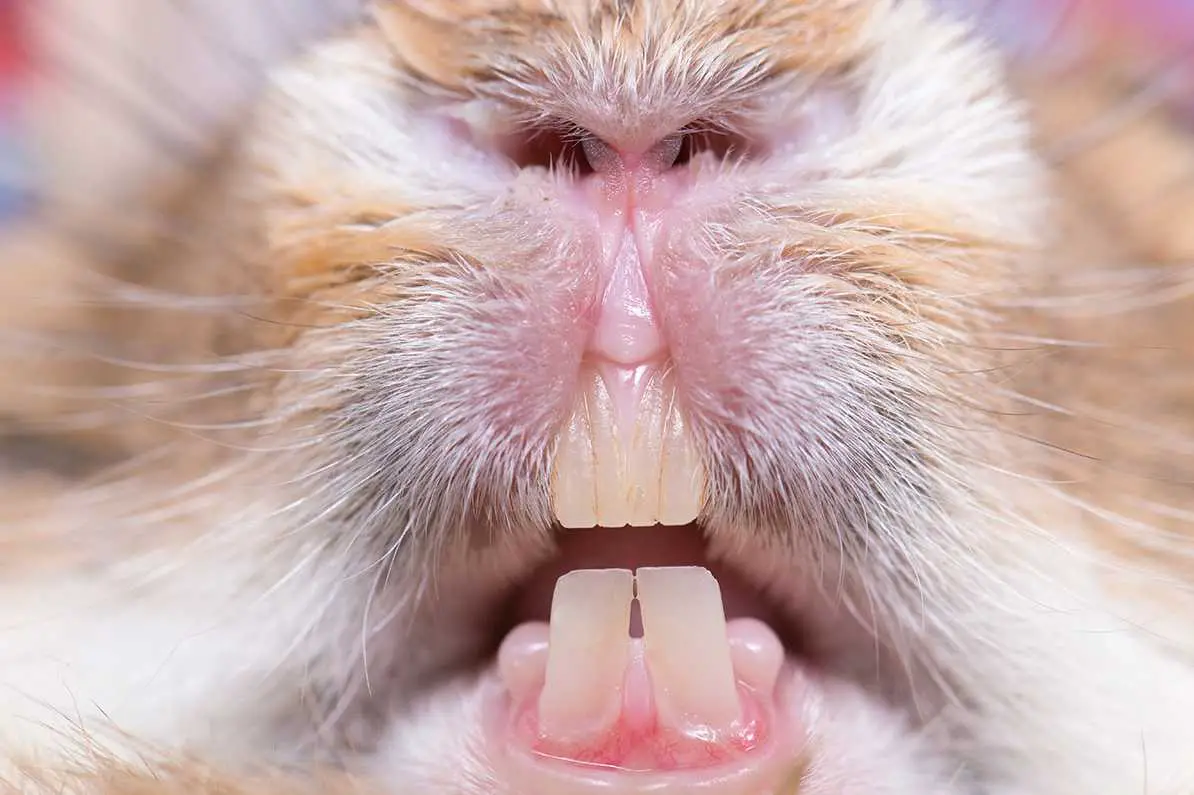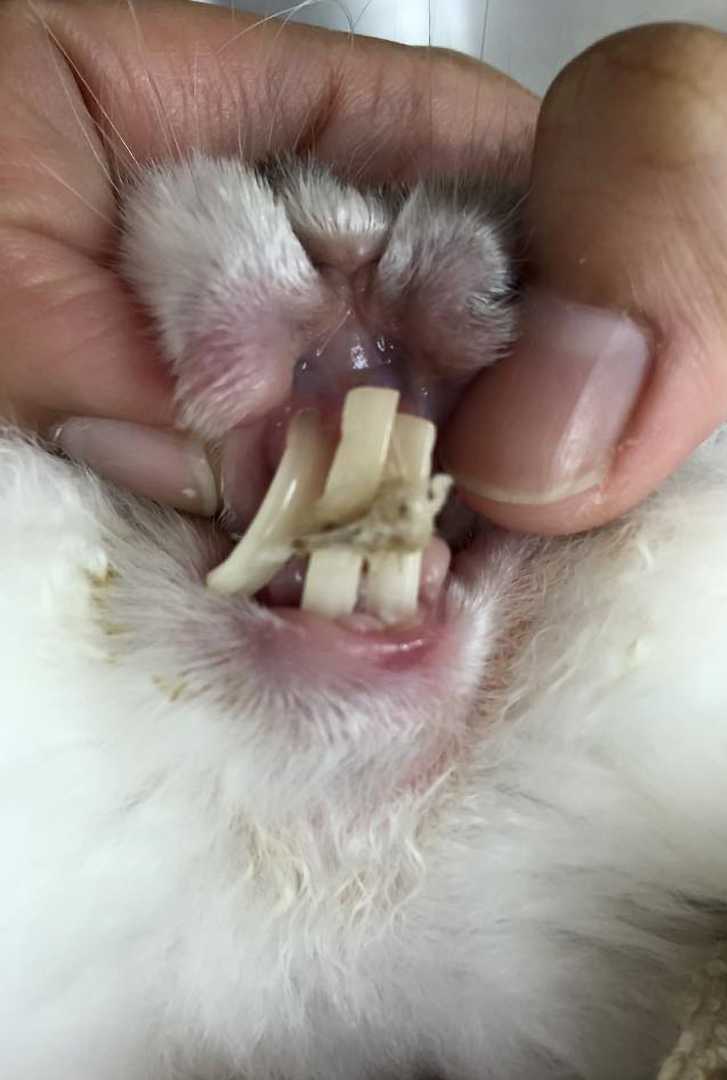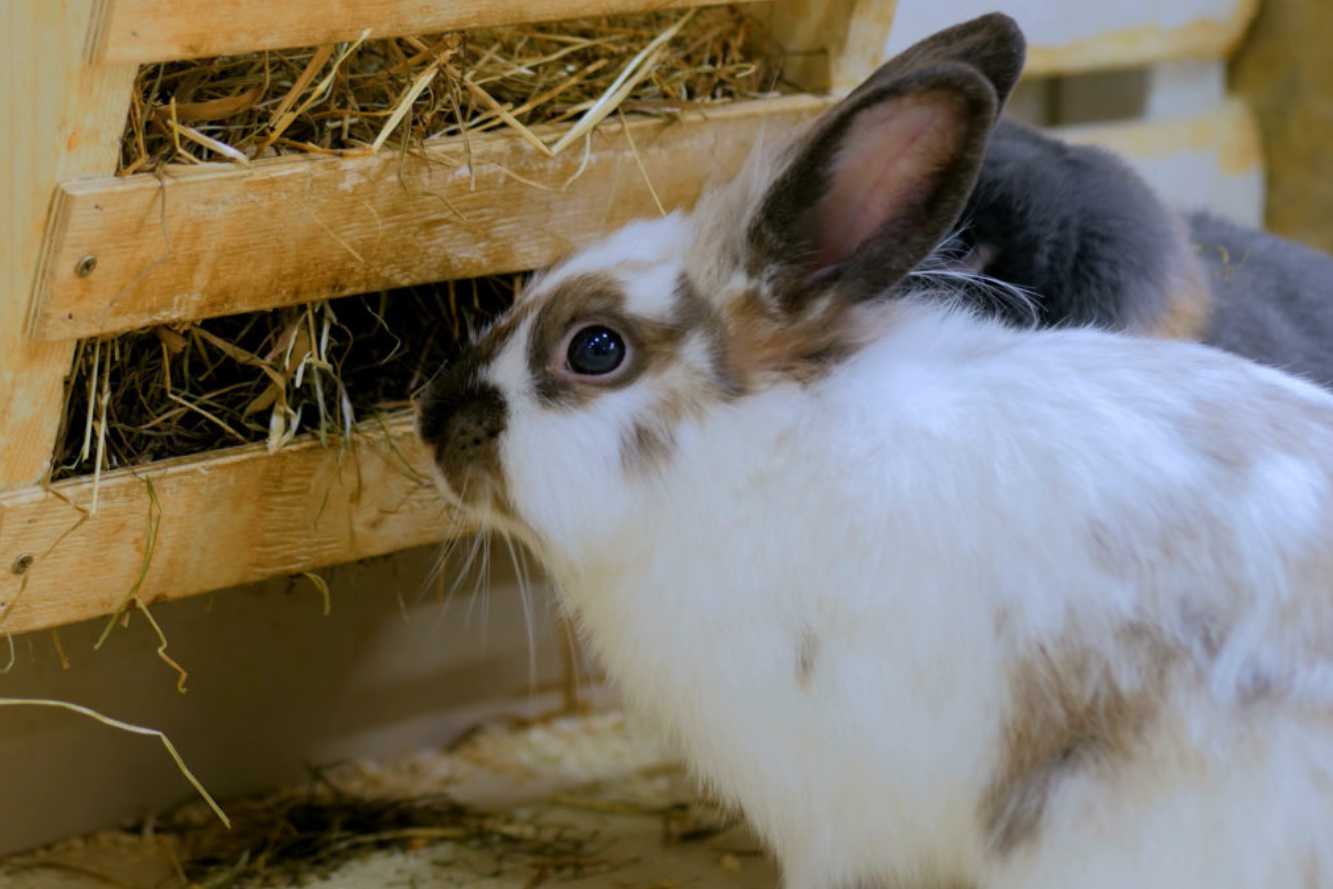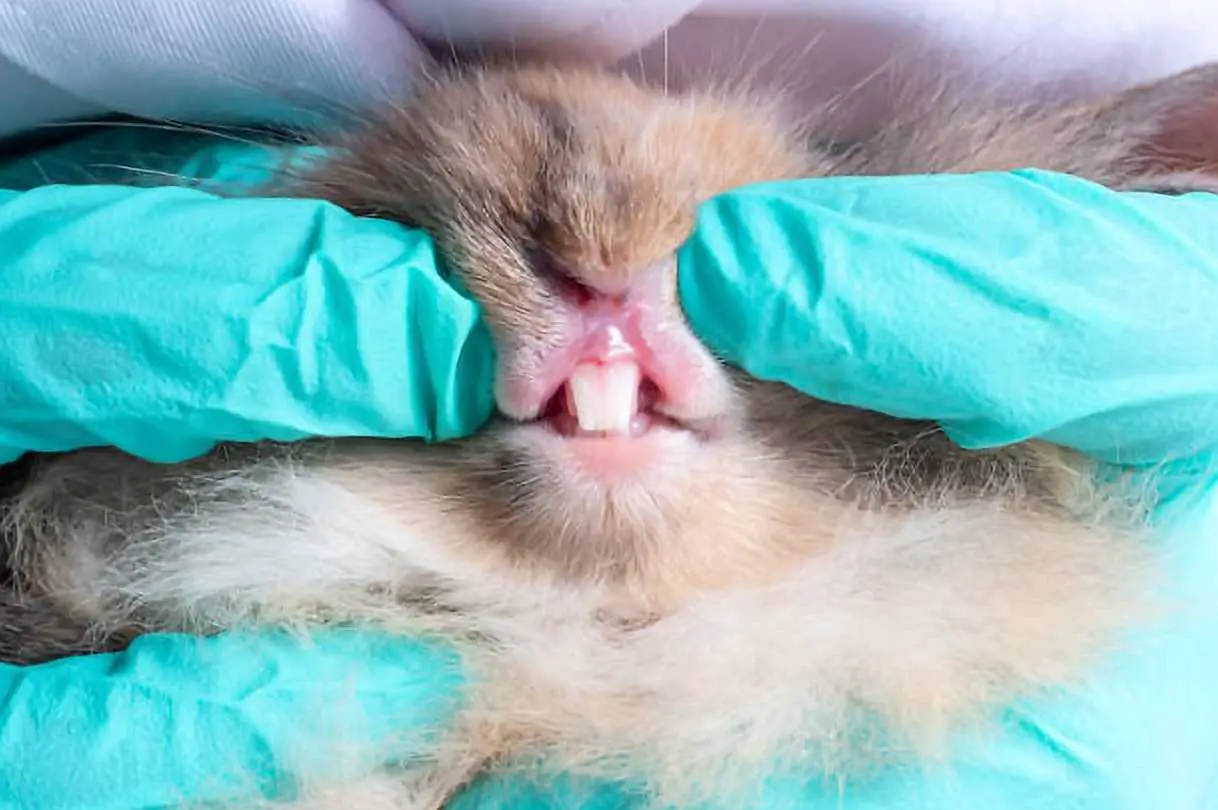One of the main concerns of a rabbit owner is their pet’s teeth. If left unattended, a rabbit’s teeth can grow as much as it wants, which can be harmful and painful for your pet. Join us as we search for the best ways on how to keep rabbits’ teeth short.
The Rabbit’s Teeth
The most important fact about a rabbit’s teeth that owners should know is that they never stop growing. This is caused by the rabbit’s diet.
You might be wondering, why on earth do some rabbits have even teeth? Well, that’s because they can continuously eat tough foods that can wear down their teeth. That’s why wild rabbits don’t just eat grass; they also eat twigs and branches whenever they can.
For wild rabbits, overgrown teeth are not a big problem. However, the same cannot be said for rabbits kept as pets. There may be instances when your rabbits are not fed enough timothy hay, which can cause their teeth to grow bigger than average.
This can become a big problem if left untreated. You may also check this video for more information.
Before everything else, it’s essential to learn about the rabbit’s teeth and what the parts are. This will give you a deeper understanding of the problem and how you should approach it.
There are four types of rabbit teeth nominally Incisor teeth, Auxiliary incisors or peg teeth, Premolars, and Molars.
The Incisor teeth, also known as the front teeth, are four large teeth used to slice and break up food. They should be kept long and straight, with the top two teeth overlapping the bottom two.
Your rabbit should also be able to close its mouth. Next are the Auxiliary incisors, which are located on the back of the two top Incisor teeth. They should not be visible, no matter what.
The third one is the Premolars. There should be three top premolars and two bottom premolars on each side. Lastly, we have the Molars.
There should be six top molars and three bottom molars on each side, and your rabbit should also be able to close her mouth. Pay attention to your rabbit’s teeth since they grow for about 2 mm per week.
How to Tell if your Rabbit’s Teeth are Too Big
Now that you know more information about your rabbit’s teeth, it’s time for you to figure out if your rabbit’s teeth are too big. Spotting these signs early on can help you deal with the problem more efficiently and faster. Without further ado, here are some of the signs you should look out for.
- Nasal or Eye Discharge: Your rabbit’s teeth grow inwards, not outwards. So if it’s left untrimmed over time, it can irritate either the eyes, nose, or both. Be attentive with your rabbits and spot this sign easily if they have a runny nose or too many tears.
- Discoloration: One of the easiest ways to spot rabbit teeth that are too big is by judging their color. If your rabbit’s teeth are healthy, they should be pure white in color. However, if there is a yellowish tint on your rabbit’s teeth, it’s getting long.
- Sharpness: You should never forget that rabbit teeth shouldn’t be as sharp as fangs. If they are beginning to resemble one, immediately contact your vet or change your rabbit’s diet.
- Discomfort: If a rabbit’s teeth are way too big, you’ll begin to see them feel some discomfort or pain. It’s essential to pay attention to your rabbit so that you’ll be able to see the slightest change in their behavior or appearance.
Keep Rabbits’ Teeth Short by Keeping the Right Diet
The first way to keep your rabbits’ teeth short is by giving them a balanced diet. As you must know, grass or hay should be the main part of your rabbits’ meal at all times. However, each rabbit owner must know about the different types of hay to know what to feed their pets.
The most recommended form of hay is the Timothy hay, packed with fiber that rabbits need. They are a bit hard, which makes them perfect for your rabbits to nibble on at any time of the day.
You should avoid using Alfalfa hay at all costs. This type of hay is usually soft and low in fiber.
Leave a bundle of Timothy hay in the morning and watch as your rabbit happily nibbles on it throughout the day. This will keep them strong and healthy, but it would definitely work in keeping their teeth short.
You can also add other food to their meal but make sure that most of the meal comprises Timothy hay.
Aside from their diet, one thing that you could also do is to add some items inside their cages in which they can chew on. Some great examples of this are twigs, branches, chew toys, and rubber toys. This will give your rabbit some exercise as they nibble their hearts out.
Keep Rabbits’ Teeth Short by Checking In with your Veterinarian
While the first one is done naturally by changing your rabbit’s diet, this section will show the intervention side.
Intervention is what you need when your rabbit’s teeth are too big, and the diet is not enough to trim it down. It can be done by sending your rabbit to a veterinarian and having their teeth trimmed.
Once you see a sign of overgrown rabbit teeth, do not hesitate to call your veterinarian. Ask if they are specialized in rabbit husbandry since they are the only ones qualified to trim your rabbit’s teeth efficiently.
They would do a process called burring, where the teeth are not cut outright but instead ground slowly.
If you are not confident enough, you should not try to cut your rabbits’ teeth. Unqualified people can cause more harm than good, and it can result in more problems.
There are tendencies where your rabbits’ teeth may crack or break if you did it all independently, so it’s better to give your vet a call.
Burring is a simple procedure done by veterinarians while the rabbit is injected with an anesthetic. It is done to ensure that your rabbit won’t feel any pain during the process and instead feel light.
You need to come back to your vet every two months to maintain your rabbit’s perfectly sized teeth.
If we talk about cost, burring your rabbit’s teeth through an experienced veterinarian should not cost more than 75 to 100 dollars. This is the standard price for the process, and it may go lower, depending on your bet.
You may also want to check your rabbit insurance if you have one since it will most likely cover, if not all, a part of the expense.
Frequently Asked Questions
Since we’re nearing the end of this article, we took some time to list down some of the most frequently asked questions about rabbits and teeth.
Rabbit teeth are an essential topic that you should be well aware of in many ways possible since they play a significant role in your rabbit’s life.
With overgrown teeth, your rabbit will experience immense pain and discomfort that can affect how they are with people and other pets. Check these questions below since you may also be thinking about the same thing and get the answers you need.
Will baby rabbits shed teeth?
Unlike humans, rabbits don’t lose their teeth and grow a different set of adult teeth. They only have one set of teeth in their whole lifetime, and they do not need to be shed to be replaced by bigger and stronger ones.
If one of their teeth falls off, it’s just a regular part of their growth, and it can be caused by many other factors. Do not forcibly remove their teeth and hope for stronger ones to grow back.
Will a rabbit’s teeth grow again?
It’s entirely normal for a rabbit’s teeth to fall out at any point. It can be caused by many things such as genetic issues, disease prevention, or accidents.
There’s no need to worry about it for as long as the root remains unharmed; your rabbit’s teeth will grow again. Once it grows back, observe it to ensure that it doesn’t go sideways or come out crooked.
Should I be worried about teeth grinding?
Most rabbit owners will feel a sense of worry whenever they see or hear their rabbits grinding their teeth. We’re here to tell you that it is normal, and there is no cause for concern.
Teeth grinding creates a soft sound that rabbits consider their way to communicate. It is like a cat’s purr, so don’t worry if your rabbit’s cheeks move without eating anything. Teeth grinding is shown as a sign of comfort that you would most likely see when you pet them.
Summary
By the end of this article, you should now know how to keep rabbits’ teeth short. It takes an immense amount of attention and care to ensure that your rabbit lives comfortably and without any pain. Don’t forget to share this article with your friends who are rabbit owners.




